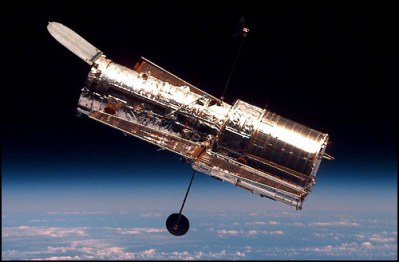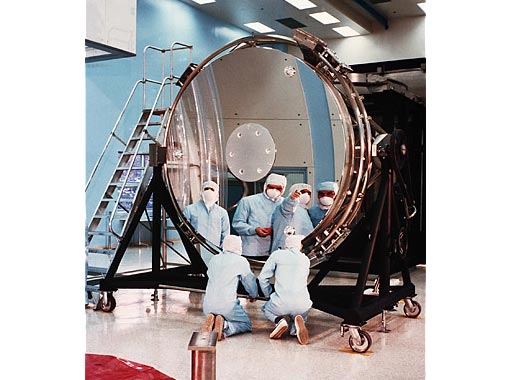This diagram illustrates a map of the light rays and images we are now able to see. The images we see at the edge of our viewing range represents our universe when it was quite young because it took so long for the light rays carrying thoseimages to arrive here.
The Hubble Telescope was named after Dr. Edwin Hubble, who confirmed the concept of the "expanding universe" which provided the foundation for the Big Bang Theory. This high-tech "eye in the sky" completes a full orbit around the Earth every 96 minutes at a speed of five mile per second.
Since it was launched from the space shuttle Discovery on April 25, 1990, the Hubble Telescope has provided stunning images of a universe previously unimaginable at a stunning speeds. In fact, it transmits and average of 120 gigabytes of scientific data in a typical week. That would fill enough books to fill a shelf spanning over 3,300 feet!
This massive telescope requires 2,800 watts of energy which is provided by the sun through two 25 foot solar panels. It has six nickel hydrogen batteries that store power equal to that found in twenty car batteries. Collectively, these batteries weigh 460 pounds, with each one measuring 36" X 36" and standing 11 inches high.
The Hubble uses two mirrors. The primary mirror is 94.5 inches in diameter (approx. 7.83 feet) and weighs 1,825 pounds. The secondary mirror is 12 inches in diameter and weighs 27.4 pounds.
To be able to capture these dramatic images, the Hubble must be able to focus on its subject without deviating more than 7/1000th's of an arc second which is equivalent to the width of a human hair as seen from a distance of one mile.
One interesting side note is that if all the time that passed since the universe began were squeezed into a 24 hour time period, humankind would have only existed for the last two seconds.



